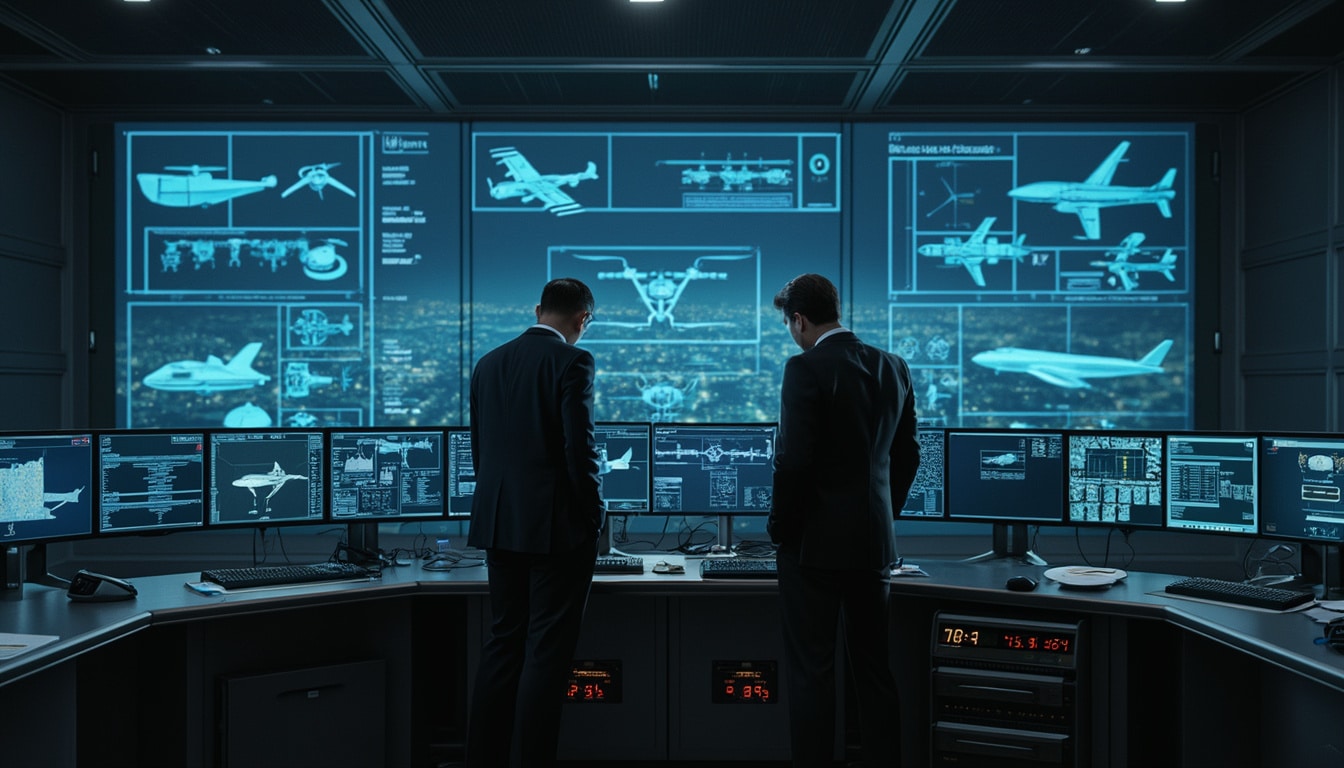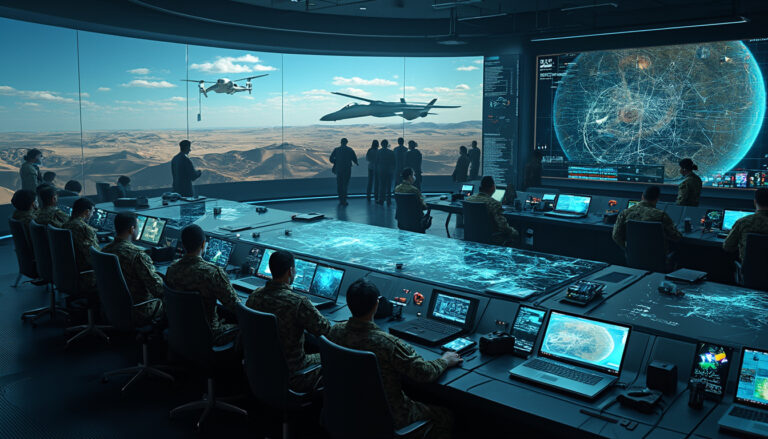The landscape of American defense is on the brink of major transformations.
Heidi Shyu, prominent technological leader at the Pentagon, plays a central role in this evolution.
In the face of proposed budget cuts, the future of the Rapid Defense Experimentation Reserve (RDER) remains uncertain.
In preparation for next year, Shyu is working closely with Bill LaPlante, the Pentagon’s head of acquisitions, to ensure that the innovative projects of the Rapid Defense Experimentation Reserve can quickly move from demonstration to production. Despite concerns from lawmakers who propose cutting the budget allocated to this program in half for fiscal year 2023, measures are being taken to prevent promising initiatives from stagnating. The first series of demonstrations will focus on long-range precision fires, aiming to fill critical gaps in joint military capabilities. As part of these efforts, the department is preparing to overcome the dreaded “valley of death”, a phase often perilous where many innovative technologies see their potential stifled before being fully adopted.
Beginning with an estimation of innovation, Shyu launched the RDER effort as a response to identified gaps in joint capabilities. The program, in collaboration with the various armed services, has already attracted nearly 500 participants from 190 companies during its dedicated day in July. Although the initial projects have not yet been made public, the plan is to start execution as soon as Congress approves the necessary funding for fiscal year 2023. Shyu and her team’s proactive approach aims to ensure a smooth transition of proven technologies to operational use, thereby enhancing the strategic posture of the department.
The Senate appropriations committee’s proposal to reduce RDER funding to $176 million instead of the $358 million requested by the department raises questions about the program’s long-term viability. The committee justified this reduction by stating that officials did not present sufficient plans for transitioning developed technologies to the field. In response, Shyu reiterated the importance of RDER in preventing innovations from getting stuck in the “valley of death”, emphasizing the need for close collaboration between research and acquisitions to overcome these hurdles.
As the department prepares to submit its funding request for fiscal year 2024, discussions with the Defense Management Action Group continue in order to secure the essential resources for RDER’s success. The ultimate goal is to address transition challenges and ensure that the most promising projects can benefit from rapid and effective deployment. In this context, Shyu’s commitment and leadership are crucial for navigating a complex budgetary environment and ensuring that innovation continues to drive U.S. defense capabilities.

Table des matières
ToggleIntroduction to the role of Shyu and LaPlante in the Pentagon
At the heart of the Pentagon’s technological initiatives, officials Heidi Shyu and Bill LaPlante play a crucial role in the production of essential technologies. Heidi Shyu, Under Secretary of Defense for Research and Engineering, works closely with Bill LaPlante, the head of acquisitions at the Pentagon, to ensure that the innovative projects developed by the Rapid Defense Experimentation Reserve (RDER) effectively transition from the demonstration phase to operational production. This collaboration is essential to bridging the gap often encountered between technological development and its adoption by the armed forces.
Their synergy ensures that technological innovations do not remain on hold but are rapidly integrated into the operational capabilities of the Department of Defense. By working “hand in hand”, Shyu and LaPlante ensure that the most promising projects benefit from an accelerated acquisition pathway, thereby meeting the urgent needs of the armed forces. This proactive approach is particularly important in light of budgetary challenges and political pressures to reduce funding without compromising technology transitions.
The objectives of the Rapid Defense Experimentation Reserve
The Rapid Defense Experimentation Reserve (RDER) is an innovative program established by the Pentagon to address gaps in technological capabilities within the armed forces. The initiative aims to encourage joint experimentation among the various military services and the private sector to develop advanced technological solutions that meet specific defense needs. The initial demonstrators of RDER will focus on long-range precision fires, with subsequent sprints focusing on contested logistics and base defense technologies.
One of RDER’s primary goals is to reduce the “valley of death”, that critical period where a promising technology fails to transition from prototype to operational adoption. By directly funding experiments and facilitating rapid transitions to production, RDER helps ensure that innovations are not only tested but also effectively deployed in the field. This program is essential for maintaining the technological edge of the United States in an ever-evolving geopolitical context.
The collaboration between Shyu and LaPlante to accelerate production
Heidi Shyu and Bill LaPlante have established a close collaboration to ensure that projects identified by RDER can quickly move from demonstration to production. Shyu expressed her intention to work “hand in hand” with LaPlante, ensuring that critical prototypes benefit from a fast-tracking the acquisition pathway necessary for rapid production. This strategy is fundamental to addressing lawmakers’ concerns, particularly those in the Senate, who have suggested budget cuts for RDER without clear transition plans.
Thanks to this collaboration, initiatives such as the development of inertial navigation systems, essential for modern technologies, can be tested in real-world environments and, if successful, rapidly integrated into existing military operations. For example, the inertial navigation system is a key technology that could benefit from this accelerated process, ensuring rapid adoption and enhancement of the forces’ navigation capabilities.
The budget challenges and proposed cuts by the Senate
Despite the efforts made by Shyu and LaPlante, the RDER program faces significant budgetary challenges. The Senate Appropriations Committee has proposed cutting requested funding for fiscal year 2023 in half, from $358 million to $176 million. This decision is primarily motivated by officials’ refusal to provide sufficiently detailed transition plans for the technologies developed by RDER. The Senate is concerned that without a clear roadmap, innovations may fall into the “valley of death”, failing to be brought into production.
Shyu responded by emphasizing that RDER was designed specifically to counter this type of problem. She stated, “If you have an excellent prototype that solves a capability I need, we want to test it in a contested environment. If it still works outside of your laboratory, there is an option to transition to rapid production.” This approach aims to demonstrate the efficacy of RDER and justify the continuity and potential increase of funding for future fiscal years.
By integrating projects such as the Swedish armed forces and their expertise in underwater technology for 2024, the Pentagon can illustrate how international collaborations and targeted investments in cutting-edge technologies contribute to strengthening national defense capabilities. This could help convince lawmakers of the necessity to maintain or increase funding allocated to innovative programs like RDER.
The impact of technological innovation on defense capabilities
Technological innovation plays a crucial role in maintaining the military superiority of the United States. The joint efforts of Shyu and LaPlante enable the rapid integration of advanced technologies such as communication systems and tank technologies, thus improving the efficiency and responsiveness of the armed forces. By focusing on crucial areas such as long-range precision fires, the Department of Defense can develop precise and long-range strike capabilities, essential in modern combat environments.
Furthermore, the emphasis on networks of tomorrow, as highlighted by the Pentagon CIO, enhances military communications and ensures optimal interoperability among different branches of the armed forces. This interconnection is crucial for coordinating large-scale operations and effectively responding to emerging threats.
Innovations in the field of ground robots, although facing challenges such as potential capture by adversarial forces, as highlighted by the potential capture of an Estonian ground robot in Ukraine, offer interesting prospects for increasing automated presence on the battlefield. Moreover, ongoing exploration of new technologies, as observed during a military experiment dedicated to communication systems, demonstrates the Pentagon’s commitment to staying at the forefront of technological innovation.
Case studies: Key projects of the RDER program
The RDER program has already initiated several promising projects that illustrate the potential impact of rapid experimentation on defense capabilities. One of the most anticipated projects concerns the development of advanced inertial navigation systems. These systems are essential for modern technologies, ensuring increased precision and reliability in various military applications. More information on this subject can be found here.
Another notable project is the enhancement of underwater technology expertise by the Swedish armed forces for 2024. This project aims to develop advanced capabilities for submarines and marine defense systems, thereby strengthening the strategic presence of the United States in aquatic environments. International collaboration and knowledge sharing are at the core of this initiative, allowing for a seamless integration of innovations into military operations.
Additionally, the RDER program is also focused on ground robotics technologies, although this area presents challenges, as evidenced by the potential capture of an Estonian ground robot by Russian forces in Ukraine. This situation underscores the importance of securing technological advancements and developing effective protective measures to prevent sensitive technologies from falling into the wrong hands.
Finally, the exploration of advanced communication technologies, including tank communication systems, ensures reliable and secure connections on the battlefield. These improvements facilitate the coordination of forces and enhance the efficiency of military operations. Each project within the RDER program is carefully selected for its potential to transform defense capabilities and meet the critical needs of the armed forces.
The importance of emerging technologies for modern defense
Emerging technologies play a vital role in the evolution of modern defense strategies. Advancements such as next-generation communication networks and inertial navigation systems are essential for maintaining the tactical advantage of the armed forces. By investing in technologies like 5G, the Pentagon is paving the way for ultra-fast and secure communication capabilities, crucial for real-time operations.
Shyu and LaPlante’s initiatives under the RDER program not only develop these technologies but also test them in real-world conditions, ensuring their reliability and effectiveness before large-scale deployment. This includes areas such as ground robots and autonomous systems, which offer unprecedented possibilities for reconnaissance, logistics, and combat missions.
Moreover, efforts to enhance expertise in underwater and land technologies illustrate the Pentagon’s holistic approach to innovation. Projects such as the enhancement of underwater technologies by the Swedish armed forces demonstrate the importance of international cooperation and the integration of best practices to develop robust and effective solutions.
Finally, the integration of advanced technologies into existing systems, such as tank communication systems, enhances the resilience and responsiveness of the armed forces in the face of modern threats. The significance of these technologies cannot be overstated, as they form the backbone of contemporary and future military operations.
Pentagone : Les États-Unis vont investir dans la production d’armes à longue portée en #Ukraine.
— CGTN Français (@CGTNFrancais) October 24, 2024
























